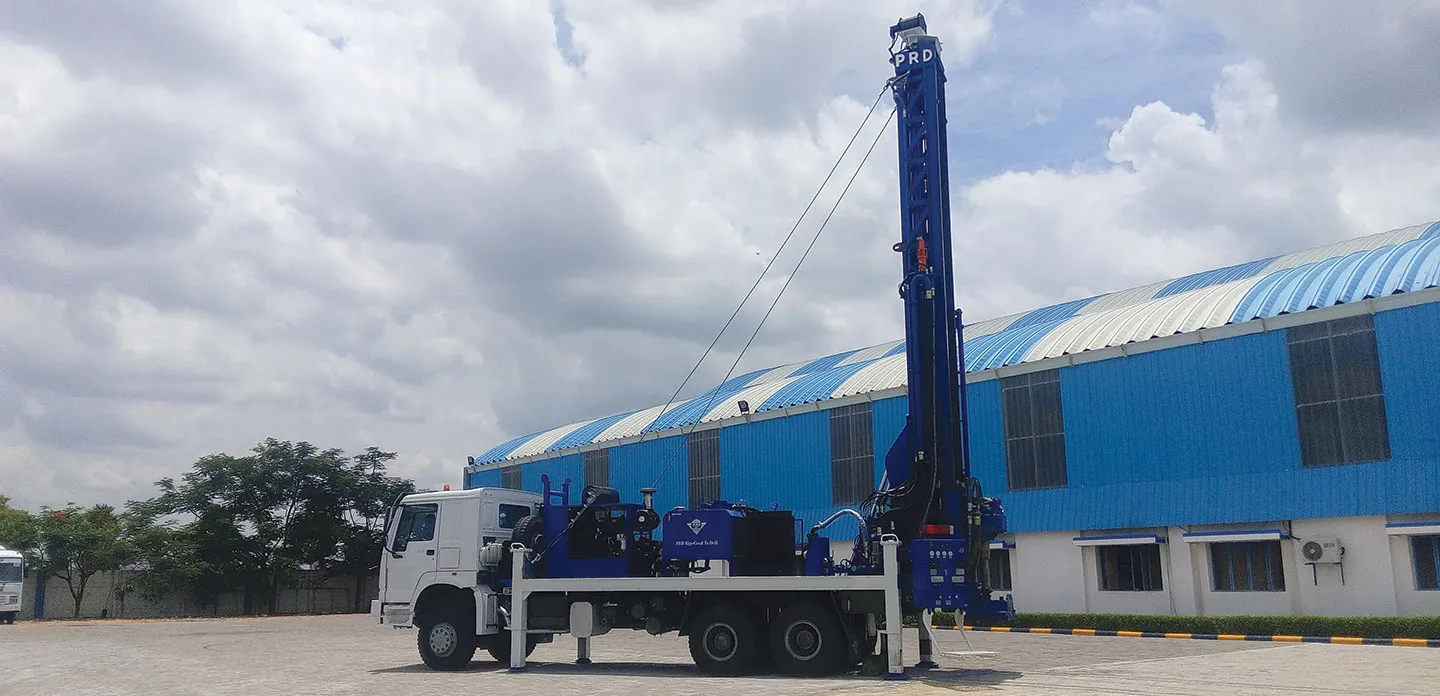Paranthaman Exporters is the export division of PRD Rigs, a leading Indian manufacturer of drilling rigs for oil and gas exploration, and other applications. Founded in 1972, Paranthaman Exporters has designed, manufactured, and exported more than 350 rigs to various countries around the world. The recipient of consecutive Indian Regional Export Awards for outstanding export performance from 2005 to 2014, Paranthaman Exporters has continued to grow, due to increasing demand for the company’s drilling rigs, particularly in Africa. PRD rigs are now used in 30 different countries. Recently, the company has begun to diversify its product development to capitalize on growing markets for mining and construction equipment by developing and manufacturing a wide range of drilling products for use in the mineral exploration and geotechnical markets. New applications include water well drilling rigs, piling rigs, geotechnical rigs, blast hole rigs, core drilling rigs, reverse circulation rigs, and other types of customized rigs. Until 2011, Paranthaman Exporters used AutoCAD® 2D design tools in combination with hand calculations to design and validate rig components. However, increasing customer requirements for faster development, design reviews in 3D, and validation of rig performance using finite element analysis (FEA) simulation technology compelled the company to transition its development platform from 2D to 3D, according to Design Head Ramesh Rajamani. “In 2D, it took at least 30 days to complete the design for a custom drilling rig when our customers wanted it in half that time,” Ramesh recalls. “To improve our competitiveness, we needed to accelerate development, validate designs with FEA, and resolve the fabrication issues that are inherent in manufacturing equipment that’s designed in 2D.” Paranthaman Exporters implemented SOLIDWORKS Standard design, SOLIDWORKS Professional design, and SOLIDWORKS Simulation Professional analysis software solutions. The company chose SOLIDWORKS software because it is easy to use, includes access to fully integrated FEA simulation tools, and provides the best value for the price. “SOLIDWORKS is very user-friendly and the most popular 3D design solution in India,” Ramesh says. “SOLIDWORKS is also used by the majority of our customers and partners.”
Faster Design, Increased Throughput, Fewer Fabrication Issues
Since implementing SOLIDWORKS design and analysis solutions, Paranthaman Exports has cut its development cycles in half—doubling its custom rig development throughput—while simultaneously resolving a range of fabrication and assembly issues, which occurred frequently when working in 2D. “Our customers demand that we complete all manufacturing drawings for a custom rig within 15 days,” Ramesh notes. “Working in 2D, it was impossible to finish the drawings for a rig in less than 30 days. By implementing SOLIDWORKS, we have been able to consistently meet our customers’ requirements, reducing our design cycles by 50 percent, which has substantially improved our competitiveness. “We’ve also been able to eliminate the fabrication and assembly issues and associated rework that were common with 2D because we can use tools like interference/collision detection to resolve clearance and alignment problems in 3D,” Ramesh adds.
